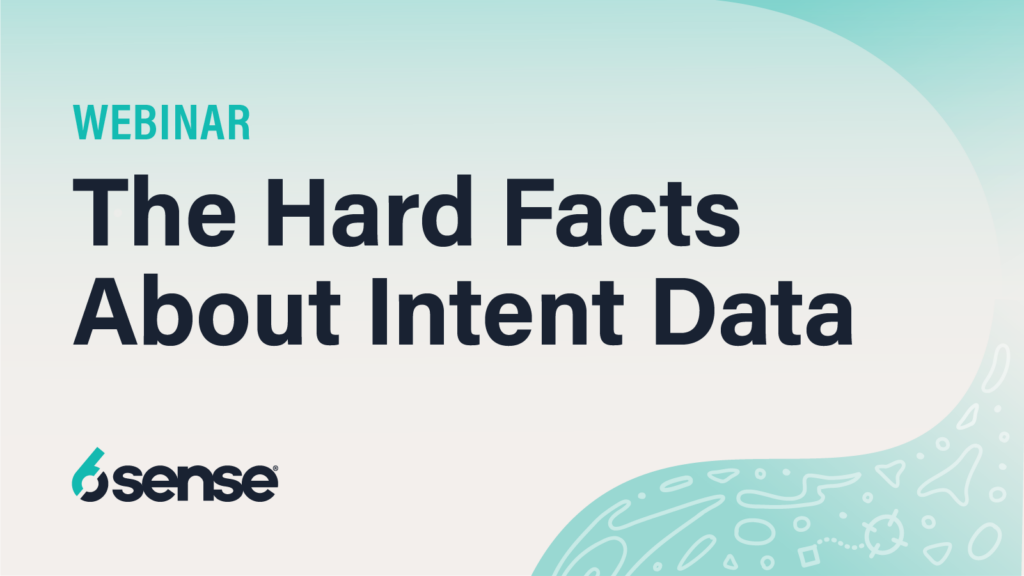Enterprise CMOs, demand gen, and revops teams continuously experience pressure to deliver more revenue and meet year-end targets. Pipeline goals for the second half of the calendar year are always higher than in the first half, and the post-pandemic economic rebound makes the stakes even higher.
If you’re already behind on your revenue goals now — or if your quarterly targets seem out of reach — you’ve hit what we call “crisis mode.”
To help you feel less panic and more zen, we recently spoke with Dave Kellogg. As a CMO, CEO and director for 10-plus startups ranging from $0 to over $1 billion in revenue, Dave brings a unique perspective to the pipeline challenges faced by companies of all shades and sizes.
Today, he’s an investor, advisor and prolific writer on kellblog.com, using his wisdom to help companies start, scale, and lead.
Crisis Mode: I Need More Pipeline Now!
Here are five invaluable tips Kellogg offered to help marketing teams find quick wins and accelerate revenue growth:
1. Segment the Pipeline
According to Kellogg, pipeline acceleration for marketers starts with challenging your own assumptions. For example, let’s say your average sales cycle is nine months long, so you mistakenly assume there’s nothing you can do to hit your pipeline goals in the next six months.
“Looking at average conversion rate and average sales cycle is how you wind up on the bridge of the Titanic,” Kellogg says.
Kellogg urges CMOs to stop viewing pipeline as a monolith. Instead, look at the pipeline by source, channel, opportunity type, industry, size or segment. “When you do this, you’ll find that you don’t need to make the pipeline move faster, because it already moves faster,” he says.
By breaking down the pipeline, you may find that you can close expansion deals in two months and SMB or partner-sourced deals within four months — instead of the nine months needed for enterprise clients. Suddenly, opportunities will abound in unexpected places.
2. Look for Warm Accounts
This is where a solid account-based marketing strategy pays big dividends. The problem with lead-centric demand generation that measures the number of touches an individual person makes is that it misses the bigger picture.
For example, let’s say 17 people in one account (some matching your target buyer personas) have two or three touches with your sales team. No one person reached out enough times to get above the noise.
“But if you look at the account and see a bunch of people at that company are interested, you can target them with marketing and SDR campaigns,” Kellogg says. That’s important, because warm accounts will close faster than cold ones.
3. Run Marketing Campaigns to Find Existing Evaluations
Some sales managers don’t like late-joining existing evaluations for good reason. They can be a tough sales cycle to win. But these buyers are already looking for a solution, and the reality is, they will eventually buy from somebody.
This is where marketing and demand gen teams can help move current evaluations further down the funnel.
The download of a white paper or decision guide can signal that an existing evaluation is closer to making a decision. Google Ads campaigns comparing Vendor A and B can help find additional insights. So too can any sign that a current evaluator is pricing a particular category.
“Remember, the No. 1 cause of pipeline death is ‘bought nothing,’” Kellogg says.
4. Look at Intent Data
This is a way marketers can get more scientific with current evaluations. According to TrustRadius, only 40% of software companies currently use buyer intent data for lead generation, so this is a potential differentiator for your product and brand … and it may delight your sales team. It’s also a great way to fuel pipeline growth now.
Companies like Bombora allow CMOs, CROs, and revenue teams to score accounts for their propensity to buy, create intent models for specific GTM segments, and weigh intent topics based on their relative importance to the buying process.
5. Help Sales Develop Alternate Forms of Proof
One of the biggest barriers sales teams face is the proof of concept (POC) phase. In many cases, onboarding a customer for a POC takes just as much time as onboarding a new customer.
If you’re a CMO of a new startup, then a POC is needed. “But if you’ve grown to $20 million, $50 million or $100 million in ARR, you don’t need a POC to prove your solution works,” Kellogg says.
CMOs can help sales solve this headache and close deals faster. Consider offering alternative measures of proof. Maybe a case study or white paper would instill the same amount of buyer confidence. Perhaps a back-end guarantee, such as a 90-day out, would help.
Or maybe it’s time to start a customer referral program so buyers can hear about your product from others who have reaped the benefits.
Start With a Foundation of Trust
All of the five tips above have one thing in common: they require CMOs, demand gen, and revops teams to work as partners. If trust has eroded between marketing and sales, it makes tasks like segmenting the pipeline much harder.
“When there’s a damaged relationship, I encourage CMOs to stand up and solve the problem,” Kellogg says. “Building trust will make the difference between sales saying, ‘Go back to your corner and get more more pipeline,’ and saying, ‘That’s a great idea. What else can we do to hit our pipeline goals?’”






